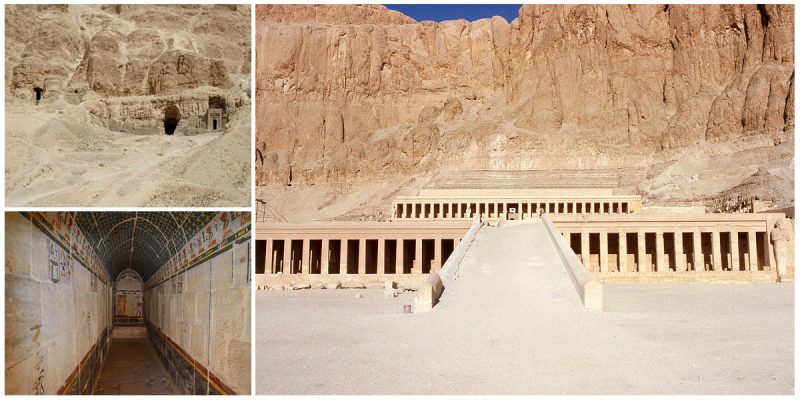The Dayr al-Bahri complex is part of the Theban Necropolis in Egypt and is one of the most visited places in the country because of its many mortuary temples and tombs.
The first temple built at the complex was the funerary temple of King Mentuhotep II (c. 1970 BCE). During the Eighteenth Dynasty, many other structures were built by Amenhotep I and Hatshepsut.
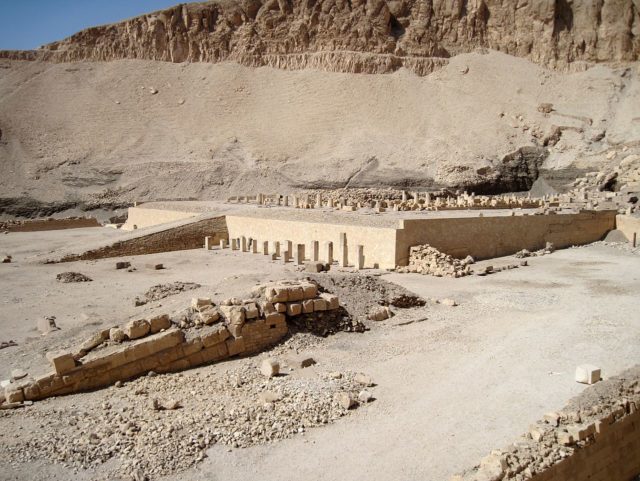
The king known for reuniting Egypt at the start of the Middle Kingdom (also known as the first pharaoh of the Kingdom), Mentuhotep II built a fascinating funerary complex. His mortuary temple built on several levels could only be approached by a causeway that was 150 feet wide, leading from a valley temple that no longer exists.
The structure consists of an entrance gate and a forecourt, and it is enclosed on three sides with big walls and a terrace. On it stands a massive structure that is believed to represent the ancient mound that arose from the waters of chaos. Seen from the east side, the structure is perhaps connected with the sun cult of Ra.
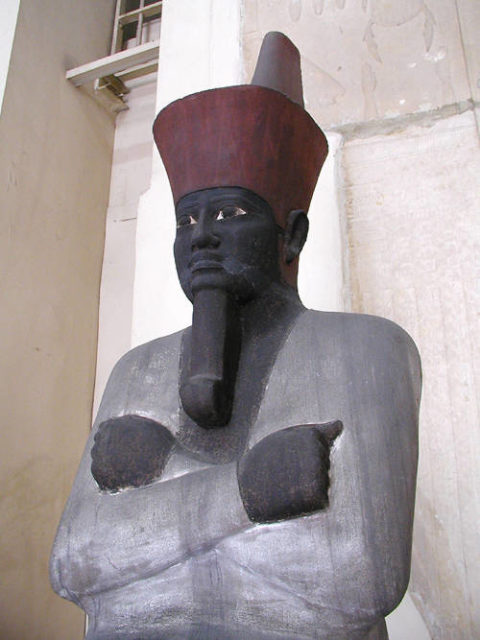
There is an opening called the “Gate of the Horseman” (Bab El-Hasan) in the eastern part of the forecourt, which leads to an unfinished tomb that can be reached through an underground passage. On this tomb, or cenotaph, there is an amazing statue of the king in a seated position.
A row of colonnades can be seen at the back of the terrace and the forecourt, decorated with reliefs. They depict hunting scenes as well as the magnificent achievements of the king.
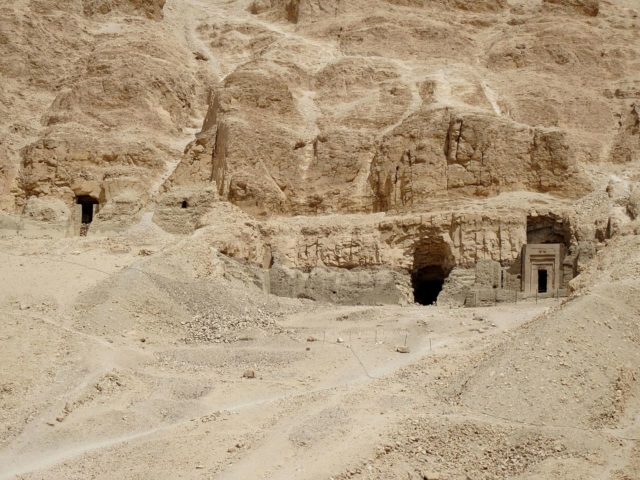
The large structure on the terrace is surrounded by an ambulatory where tombs of a few royal princesses were found. These women were the priestesses of the ancient Egyptian funerary deity Hathor. The burial shaft and the tunnel to the tomb of the king go down 492 feet and end in a burial chamber which is 147 feet below the court. This hall held a shrine in which the wooden coffin of Mentuhotep II was placed. A thick shaft was cut beneath the court that led to rooms that were left unfinished, and it is believed that originally they were intended to be part of the king’s tomb. Inside the compound, several shaft tombs and chapels were found that were built for the king’s wives.
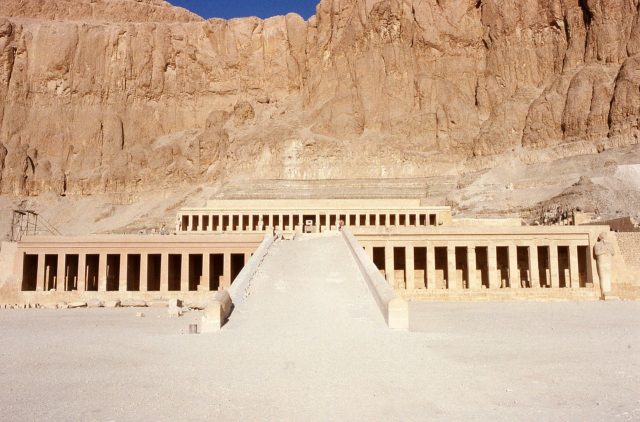
The most famous building in the Dayr al-Bahri complex is the mortuary temple of Hatshepsut, Djeser-Djeseru, which—translated from Egyptian—means “the Holy of Holies.” It was designed as a colonnaded structure by the royal steward of the pharaoh, Senenmut. It is built into a cliff face and is widely considered to be one of the “incomparable monuments of ancient Egypt.”
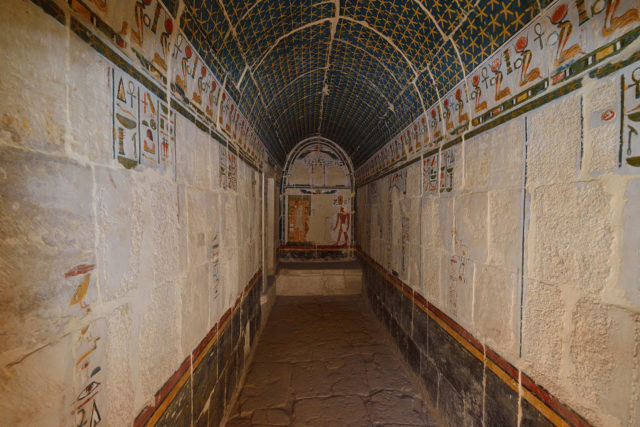
Its unusual structure is the result of the surrounding steep cliffs. There are three big terraces made in layers that reach 97 feet in height. They are connected by long ramps which in the past were surrounded by beautiful gardens. Inside the temple, there are reliefs on the walls which tell the story of the divine birth of Hatshepsut. On the sanctuary’s entrance, there are painted pillars with depictions of the deity Hathor.
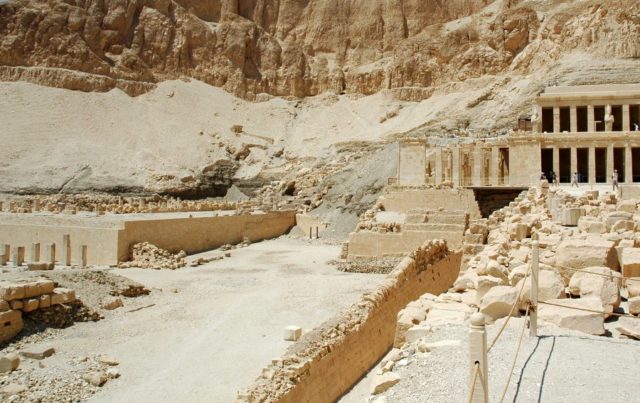
One of the most notable images is the one that shows Hatshepsut as male pharaoh giving offerings to the god Horus, and on the left side, there is an animal skin wound around a tall staff that represents a symbol of Osiris. In the Dayr al-Bahri complex, one part is dedicated to the god Amun, built by King Thutmose III.
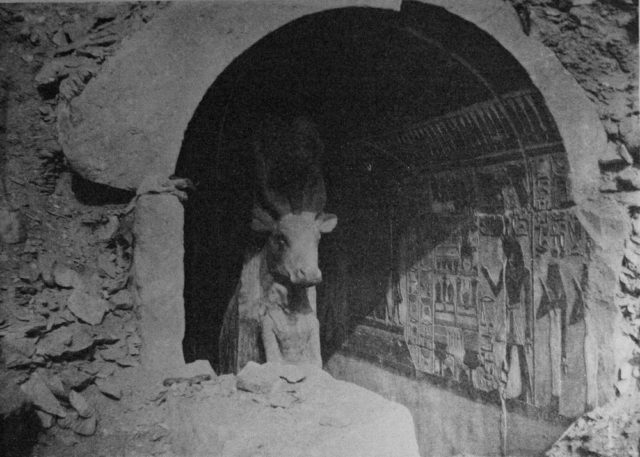
According to historians, this temple, which was discovered in 1961, was used for the beautiful festivals of the valley. In the later Twentieth Dynasty, it was severely damaged, and since then not much is known about it.
One fact is known: for a period, in Christian times, it was a Coptic Cemetery. Besides these three temple complexes, there are also private tombs dating from the Middle Kingdom. The two most notable are the tomb of Meketre and the grave of the architect Senenmut. The large areas that are private tombs and do not hold royals are called Sheikh Abd el-Qurna.
